Over the past forty years Curtis Sliwa, the Republican candidate for mayor in New York’s upcoming election, has rarely been out of the public eye. His volunteer crime-fighting organization, the Guardian Angels, was on the front page of New York Magazine less than a year after he founded it in 1979, owing both to his charm and good looks—David Remnick described him at the time as “a natural actor of the Cool School”—and his regular press releases about the group’s heroics. He has a tendency toward attention-grabbing stunts, from chugging a container of Morton’s salt on local television as a protest against Michael Bloomberg’s citywide health initiatives in 2010 to bringing Bill De Blasio a cake topped with a raw ten-pound meatball to decry the removal of Columbus Day from public school calendars over a decade later.
Having made his living for decades as a popular shock jock on conservative radio, Sliwa peppers his sonorous speech with obscure anecdotes from the city’s political history and a rich array of New Yorkisms both familiar and fading: “stunad,” “fugazi,” “tuchus,” “homeboy,” “bullfeathers,” “selling wolf tickets.” He does not hold back from the outré while campaigning, doing things like rallying outside City Hall with a poster of the emaciated corpse of a carriage horse or getting on the radio and discussing the powerful smell that emanates from his signature woolen red beret, part of the Angels’ uniform, at the end of a long summer’s day. (He began removing it during this campaign, initially revealing a stark tan line, but says that previously the only person who would see him without it was his Bukharan Jewish barber.) He has never held elected office, and did not graduate high school.
In the previous mayoral election Sliwa placed a distant second against Eric Adams, winning only the conservative stronghold of Staten Island. But this time around, as a potential spoiler candidate, he finds himself in a more influential position. Now that Andrew Cuomo is running as an independent after losing the Democratic primary to the socialist assemblymember Zohran Mamdani, he and Sliwa seem poised to split the city’s conservative vote. Sliwa could pull away a significant share of the former governor’s support: he has more money than Cuomo does in his war chest, and before Adams—who was also running as an independent—dropped out late last month, Sliwa had consistently ranked higher than the incumbent mayor in the polls. As a major party candidate, Sliwa appears at the top of a cluttered ballot: he shows up twice, first as a Republican and then on an independent “Protect Animals” line, before Cuomo appears once. A recent poll found that the race between Cuomo and Mamdani would be within the margin of error if Sliwa left the race.
There has been intense pressure on him to do so, including from major Republican donors, the editorial boards of The New York Post and Daily News, and Donald Trump, but he has gleefully refused. Sliwa’s persistence has gained him some measure of bemused respect on the left, as have his populist rhetoric, his comfortable rapport with New Yorkers, and the idiosyncratic streak that runs through his politics. “Men have died in battle for the right to vote,” he told City and State late last month, “and not so that billionaires or landed gentry or the professional political class will pick the next mayor.” Cuomo’s spokesperson has denounced him as a “liar and a fraudster.” Mamdani countered—somewhat slyly, given Sliwa’s self-confessed history of perpetrating hoaxes—that “of Andrew Cuomo, Eric Adams, and Curtis Sliwa, I trust Curtis Sliwa’s word the most.”
Sliwa’s platform combines traditional conservative issues with his own hobbyhorses: slashing taxes, overturning congestion pricing, defunding the Department of Education, safeguarding animal rights. Its top-line commitments, however, have to do with what have long been his cornerstone issues: public safety and urban crime. If elected, Sliwa has promised to keep Rikers open, advocate for reinstating cash bail, hire seven thousand new NYPD officers, and restore their qualified immunity, which protects them from most personal liability in civil lawsuits if they violate a citizen’s constitutional rights.
These might seem to be the positions of any Republican mayoral candidate in a city that has often aroused right-wing anxieties about crime and disorder. But Sliwa’s relationship to the city’s police has not always been so straightforwardly boosterish. Earlier this month, partway through arguing against progressive cash bail reforms in an interview with the journalist Errol Louis, he digressed to say that, in the first thirteen years he led the Angels, he was arrested eighty-one times. “The police hated the Guardian Angels,” he said. “I’ve been on Rikers Island in the dorm in what they call Punk City, protective custody. I’ve seen the system inside out. I’ve gotten wooden shampoos and concrete facials from cops who didn’t like us.”
Of all Sliwa’s many apparent contradictions, perhaps none is as important to understanding the city’s history and politics as the tension between his past as an oft-arrested civilian anti-crime activist and his present as a staunchly pro-police right-winger. There is good reason to be skeptical of much of what Sliwa says, and over the years accurate statistics about the size and effectiveness of the Guardian Angels have proven difficult to track down. But his prominence in the media has always given him a certain influence over New Yorkers’ perception of urban crime and what the response to it should be. Tracing his decades in public life can help us see how ideas that developed in response to the economic crisis of the 1970s, which emphasized the role of everyday citizens in preventing crime, transformed over time into a consensus that fighting disorder was a matter best handled by police, and lots of them.
*
Sliwa’s life story has a folkloric quality that makes it both irresistible and challenging to recount. Born in 1954 to a Polish-Italian family from Canarsie, he had his first brush with fame when his mother, Frances, secured him a spot on the children’s show Romper Room in 1960. She served as his publicist for decades to come, defending the Guardian Angels to the press from their family home, dressed in a suit and using the name “Fran White” to disguise her connection to their founder. As a teenager he was honored at the White House—and photographed with President Nixon—as one of the eleven top newsboys of 1971, in recognition of several accomplishments, including collecting literal tons of recyclable trash and storing them in his parents’ basement and, apparently, rescuing six people from a fire in Canarsie while delivering papers for the Daily News.
Despite this auspicious beginning, he was expelled from his Jesuit high school for challenging the dress code, as his mother told New York Magazine in 1980, and started working as a gas station attendant, then as an assistant manager at a supermarket. In 1976 he had a yearlong marriage to a woman named Koren Drayton who has no public Internet presence but whom he has described as the “spitting image” of Angela Davis. (He has consistently referenced Drayton over the years when the topic of race comes up, most recently in a panel with the mayoral candidates on how their policy platforms would affect Black women.) By 1978 he was working as the night manager of a McDonald’s on Fordham Road in the South Bronx, an area that had become synonymous with urban crime. The traditional version of the Angels’ founding story goes that the neighborhood was so dangerous that employees of the franchise came in prepared to have physical altercations with customers essentially every night; Don Chin, another manager there who would become a longtime Angel, claimed they had German shepherds chained to the roof.
Sliwa, tall and sturdy, won his employees’ respect with his courage and ability to stay standing after being punched squarely in the face. He organized them into a group called “the Rock Brigade”—after himself, the Rock—dedicated to picking up trash, as in his recycling days, but despite some early positive publicity he soon tired of the gambit. He renamed the group the Magnificent 13 and shifted their focus from literally cleaning up the streets to figuratively cleaning up the subways, which they started patrolling at night in red satin jackets and red berets.
In 1979, as membership, primarily consisting of young Black and Latino men, grew well beyond thirteen people, Sliwa changed the name again to the Guardian Angels. He kept the uniform’s essential components, but added a white T-shirt emblazoned with a red masonic eye. (He himself often wore it over a button-down shirt and tie.) Fame came quickly, accelerated by Sliwa’s charisma and PR efforts. But he could only have achieved the level of prominence he did in the 1970s, when New Yorkers were eager for any sign that the city’s tattered social fabric might be knitting itself back together.
*
Over the previous two decades public services in New York had drastically contracted. Crime rates had been increasing since the early 1960s, a decade during which the city struggled with the loss of manufacturing jobs, decreasing tax revenues, and a recession. Neighborhood watch groups became common, not just in wealthy areas but also in low-income Black neighborhoods that bore the brunt of “city-wide” reductions in services and had greater reason to be skeptical of the police when they did arrive, as the historian Reiko Hillyer argues in a 2017 journal article.1 Hillyer cites several community patrol groups operating in Harlem in the late 1960s, including one organized by the Vera Institute of Justice that sounds like a precursor of Sliwa’s: tasked with picking up trash and escorting vulnerable neighbors, its members were outfitted in tan jackets trimmed with suede.
Community relations with the police were at a low across the nation. The Kerner Report, commissioned by Lyndon Johnson to investigate the cause of urban rioting in 1967, placed the blame on systemic racial discrimination, including police violence: “The police are not merely a ‘spark’ factor. To some Negroes police have come to symbolize white power, white racism, and white repression. And the fact is that many police do reflect and express these white attitudes.” In New York, major NYPD corruption scandals made front page news, most famously after officer Frank Serpico contributed to a 1970 New York Times article detailing the millions of dollars that police were accepting from criminals and businesses.
Then, during the city’s budget crisis of the mid-1970s, the size of the police force dropped precipitously: from 31,531 in 1974 to 26,432 in 1976. In the summer of 1975 a coalition of police and firefighters’ unions protested the impending layoffs of thousands of their members by handing out pamphlets emblazoned with skulls and the headline “Welcome to Fear City,” warning tourists that they were entering a completely lawless environment and would have to protect themselves. (“Do not walk” and “Remain in Manhattan,” it advised. “You should never ride the subway for any reason whatsoever.”) Tens of thousands of other public servants were laid off, including 14 percent of sanitation workers; 16,000 teachers lost their jobs in the fall of 1975. In 1977 the Daily News estimated that the Parks Department’s payroll was 65 percent short of the number of necessary maintenance workers. That year over a third of New Yorkers reported they had zero confidence in the police’s dependability.
Responsibility for public safety was formally offloaded to volunteers and the private sector, as were many other public services. Groups like the Citizens Committee for New York City, founded in 1975 to fill some of the holes left by the municipal layoffs with private dollars and volunteer labor, trained block associations to form security patrols and offered them small grants for tools like walkie-talkies and flashlights. The police mostly welcomed the help, as the scholar Suleiman Osman has written, “despite grumblings from the rank and file about union busting and a mentally unstable element among volunteers.”2
By 1977, according to the historian Benjamin Holtzman, over 32,000 New Yorkers had gone through block-watcher trainings offered by the NYPD, and 65 percent of police precincts worked with resident patrols trained through the department’s Civilian Observation Patrol program.3 A 1976 proposal document for a “Self-Help Crime Prevention Fund” released by the Citizen’s Committee cited a statement from the police commissioner, Michael Codd: “In light of the present fiscal and manpower crisis, it is imperative that as many civilian volunteers as possible become involved in the Department related programs.” Community groups in wealthier residential neighborhoods and consortiums of business owners also started hiring private security guards. By the early 1980s there were more private security officers in the city than there were members of public law enforcement, which would prove to be a more lasting change than the fad for neighborhood patrols.
*
The Guardian Angels, however, had a notably antagonistic relationship with the police in their early years, perhaps in part because of the group’s racial makeup, which news coverage consistently emphasized. Mario Cuomo, at the time the state’s lieutenant governor, was a booster of the group, and he suggested in 1980 that officials like Mayor Ed Koch were skeptical on account of the Angels’ backgrounds: “If they were sons and daughters of doctors from Great Neck, would people be calling them vigilantes? Everyone would be giving them medals.” The head of the transit police’s union told David Remnick he knew “for a fact” that “individuals who claim to be Guardian Angels have had previous arrests.”
A more pressing issue was that Sliwa refused to submit to the authority of the transit police, turning down an offer that year to become an auxiliary force in exchange for identification cards and free fares. “We feel we can become more effective if we don’t get involved with the Transit Authority,” he said in an interview given soon after a seventeen-year-old Angel had been charged with resisting arrest and assaulting a transit officer. He wasn’t interested, he said, in merely becoming the “eyes and ears” of the police.
Police officials might be forgiven for thinking that Sliwa was not necessarily a force of order. One of the Angels’ central tenets was to patrol the subways unarmed and never incite violence, but Sliwa did not always stay on-message. In his 1981 interview with Remnick, he said that before he formed the Angels he would essentially set traps for muggers, riding the trains at night while wearing “a gold watch, a three-piece suit, holding a $300 cassette radio,” waiting for someone to jump him before signaling to his friend Don Chin, who would “come charging in from the other end of the train. Meanwhile I’d throw a few side kicks and we’d stomp ’em.” One original member of the Magnificent 13, speaking to the CBS program 30 Minutes in 1979, said that after having his jaw wired shut because of an injury sustained on patrol, he “had time to think things over” during a month stuck at home, subsisting on a liquid diet, and he realized he had irreconcilable differences with Sliwa: “I think he wanted a more violent approach than I really wanted.”
But when not grievously injured, most young people in the group seemed to enjoy participating. Teens interviewed at the time—the age minimum was sixteen—said that the Angels had brought them a sense of purpose and spoke of the respect they received from transit riders. The Amsterdam News, New York’s most influential Black newspaper, commissioned several articles on the Angels written by teenagers, including one titled “Angels Make It Cool to Care.”
Sliwa, for his part, positioned himself as a role model for young people from difficult backgrounds, but was not above stereotyping his charges, who, he emphasized, might otherwise be causing trouble. The solution to crime, he said in an interview with Karate Illustrated, “has to come from some kind of symbol, a group made up primarily of young people, the very types who were out there causing the mayhem and creating chaos in the subway system.” (The choice of magazine was aspirational: Angels were supposed to be trained in martial arts before joining patrols, but as early as 1980 Sliwa admitted to a reporter that this rarely happened.) Officials eventually came to believe that there wasn’t much point in continuing to resist a popular project. By 1981, when the group and the police finally came to an agreement to work together more closely, Koch said the plan was “fine with me.” An attorney in his administration conceded that “to the extent that the presence of this group makes the people feel good, it is worthwhile.”
*
The Guardian Angels’ impact does, indeed, seem to have been largely psychological. The few empirical studies done on the subject found that the group had high levels of approval but little to no effect on criminality. One of these studies, from 1987, concluded that the Angels might, meanwhile, have actually been having a negative effect on perceptions of safety, given Sliwa’s propensity for such rhetoric as calling criminals “mutants” and the train he patrolled “the Mugger’s Express.” The author also found it difficult to create a study with control groups given how little crime there was during the study period relative to the millions of passengers journeying through the system: “Although it comes as a surprise to most people, the number of crimes occurring on the subways appears to be quite small indeed.”
But Angels weren’t operating in the world of statistics: Sliwa advocated not for a concrete set of policy reforms but for a new state of mind. In a popular self-help guide from 1982 called Street Smart: The Guardian Angel Guide to Safe Living, cowritten with the Angels’ legal counsel, he eschewed the idea that crime was caused by structural forces such as poverty or unemployment (“If you continue to believe that criminals attack and rob because they are impoverished and are desperate to survive you are wasting your sympathy”),4 and also eschewed any of the traditional solutions: private security guards (poorly trained and easily corruptible), carrying a gun (“no more than adopting the ‘I’ philosophy: ‘I’m taking care of number one’”), alarm systems and surveillance technology (insufficient), more police and more prisons (desirable in theory, but too expensive: “the cost of police protection has so skyrocketed that our city governments are unable to provide more of it,” since “the money is simply not available unless they increase our taxes, which would also prove a grave hardship”).
The cause of crime, he argued, was actually an atmosphere of fear, and the solution was “an atmosphere of friendliness,” which would come with a revived sense of community accountability:
We, in our fear, are responsible for the situation. It is that fear that causes crime to run rampant in our cities…. [Our parents’ generation] would never give their cities over to punks by default, as we have done. If a crime was committed on any street, the residents of the entire street, acting as a community driven by a common purpose, would have slapped down the wrongdoer before he or his friends could even think of repeating the crime again.
In a time of white flight, he issued a call to return to the city and its public spaces, railing against “experts” who had instituted a curfew for a park deemed too dangerous. “Why can’t senior citizens who seek a cool place on a hot summer’s night sit in the park after dark? Why must they be removed as soon as the sun goes down? Why can’t they enjoy their city all the hours they desire?”
Aspects of Sliwa’s emphasis on care, courage, and community—not cops—as the solution to crime can sound somewhat radical today. His assumption that the government wouldn’t be able to pay for more police or prisons certainly stemmed from a radically different time than our own. But in its stress on personal responsibility and the importance of communities policing themselves, his theory of crime dovetailed with two related political developments that would profoundly shape life in the city for decades to come.
One was what historians, borrowing the political theorist Verónica Gago’s term, have called “neoliberalism from below,” the process by which New Yorkers at times enthusiastically carried out austerity and privatization at a grassroots level rather than simply having such policies imposed on them from above. Scholars have debated to what extent the Guardian Angels were part of this trend. Sliwa, ever a maverick, was hardly ideological—and, as Osman points out, privatization in New York did not crystalize into an ideology until later in the 1980s—but he certainly emphasized the cost-free benefits of a reform based solely in a change in attitude.5 “When we talk of our program of ‘involvement’ to regain our city streets,” he wrote in Street Smart, “we do so without a requirement on the part of our city, state or federal government to support our program with any tax dollars whatever. The solution is free; it requires no funding and no governmental support.”
His rhetoric about community safety also reflected an early version of an idea that came to define policing. The “broken windows” thesis, put forth by George Kelling and James Wilson in an Atlantic magazine article in 1982, some months before Sliwa’s book came out, denounced the notion that police should merely respond to serious crimes or cruise around in squad cars. Instead, Kelling and Wilson advocated for proactive, on-foot patrolling, even though they admitted it had been found not to reduce crime. Its purpose was instead to combat “fear—the fear of being bothered by disorderly people. Not violent people, nor, necessarily, criminals, but disreputable or obstreperous or unpredictable people: panhandlers, drunks, addicts, rowdy teenagers, prostitutes, loiterers, the mentally disturbed.”
Like Sliwa, Kelling and Wilson argued that this fear was at the root of lawlessness, because it created a sense of apathy among citizens—an implicit message of “Don’t get involved”—that led to a “breakdown of community controls.” The police, “under the influence of legal restrictions, provoked by media complaints and enforced by court decisions and departmental orders,” had become unduly focused on serving merely as “crime-fighters” and strayed from their historic purpose as “watchmen.” Once encouraged to reassert their “order-maintenance” function, they would be able to remind communities how to police themselves. Kelling and Wilson cited the Guardian Angels approvingly as representing a tradition of “communal involvement in maintaining order.” Even if there was no way to evaluate the group’s objective effect on crime, they argued, the Angels might make citizens feel safer and thus help promote civility.
What “disorder” meant to Kelling and Wilson was a situation in which
families move out, unattached adults move in. Teenagers gather in front of the corner store. The merchant asks them to move; they refuse. Fights occur. Litter accumulates. People start drinking in front of the grocery; in time, an inebriate slumps to the sidewalk and is allowed to sleep it off. Pedestrians are approached by panhandlers.
Such a place would then be ripe for “criminal invasion.” Given the declining budgets of police departments, they suggested that departments could deploy officers strategically, based not necessarily on crime rates but on subjective perceptions of what neighborhoods might be “at the tipping point.” A “quiet, well-tended suburb” would require little to no visible police presence—no quieting of teenagers or demanding that any “stranger” explain “if he had any means of support and what his business was.”
Sliwa shared many aspects of this ideology. In his book he wrote about how criminals had “[taken] over entire neighborhoods” and stressed that his goal was “to stop the criminal mentality, to stop the profitability in crime by convincing the punk at the earliest stages that there is a good chance he will be caught.” But he differed from Kelling and Wilson, at least in this stage of his career, in one crucial respect: where they believed that the police would always need to remain involved in public safety (“no citizen in a neighborhood, even an organized one, is likely to feel the sense of responsibility that wearing a badge confers”), he advocated leaving the police to handle only the most serious crimes and letting citizens take care of lower-level offenses essentially alone. Street Smart advised women on how to respond to harassment on the subways—“In a loud voice, accuse him of his perverted act”—and encouraged the elderly to reclaim the streets, clubbing anyone they perceived as threatening if need be: “You can’t get rid of this fear alone. But four or five of you can—traveling together, carrying canes firmly gripped in your hands and ready to shout to high heaven if a hood comes anywhere near you.” Several years later, Sliwa was still telling reporters that he thought many members of the transit police were lazy and incompetent, and that Congress should cut off all funding for the subway until managers could account “for every penny spent” on its operation.
*
Perhaps unsurprisingly, given Sliwa’s opinion of the police, positive relations between law enforcement and the Angels were short-lived. Mere months after the 1981 agreement formalizing their cooperation, Sliwa claimed he was abducted by four detectives in Washington, D.C., where he had been hoping to set up a patrol and had met with a cool reception from local law enforcement. His captors, he alleged, zapped him with a cattle prod and threatened to play Russian roulette with him before tying him up and throwing him “like a sack of flour” in the shallows of the Potomac River. More tragically, on the last day of that year, a twenty-six-year-old Guardian Angel named Frank Melvin was shot and killed by police in Newark while trying to assist them at the scene of a burglary. Sliwa was not on the scene, but as usual he spoke for the group in the aftermath. In Sliwa’s account, Melvin was opening his jacket to reveal his Guardian Angels T-shirt when the officer fired; other Angels on the scene, Sliwa alleged, were prevented from offering him CPR.
Melvin was Black, and while the official police account held that he was shot from a roof by a Hispanic officer named Milton Medina who mistook him for the suspect, Sliwa maintained that he had been shot at point blank by a white officer named Donald Karas as a result of “knee jerk” racial bias. Insisting that the police were carrying out an intentional cover-up and forcing Medina to take the fall for Melvin’s “cold-blooded murder” to avoid inflaming racial tensions, Sliwa organized dozens of Angels for a fifty-mile march from Newark to Trenton, the state capitol, to ask the state attorney general to appoint a special prosecutor to look into the case. When that effort failed, the group marched another 170 miles to Washington to try to take the issue up with the federal attorney general.6 The march yielded no results, and the next year Sliwa was sued for libel and slander by Medina and Karas, who had been exonerated of any wrongdoing. After unsuccessfully serving as his own lawyer and sole witness, he was forced to read a statement of apology at a news conference, but later publicly ripped it up, saying that he hadn’t meant it.
Sliwa may well have been motivated by a genuine belief that there was a cover-up, or by his loyalty to a fellow Angel and his family. But his passion about the case hardly seems to have left him with a deep sense of racial justice, because in 1984, just two years after Melvin’s death, he was making news as an enthusiastic supporter of the white vigilante Bernhard Goetz. A socially awkward engineer and frequent drug user who was revealed in his trial to have a history of eugenic thinking and racial slurs, Goetz shot four unarmed Black teenagers on the subway in rapid succession after one of them, Troy Canty, approached to ask him for $5. Barry Allen was shot in the back as he fled; Goetz cornered Darrell Cabey at the end of the car and fired a second shot at him which severed his spinal cord and left him paralyzed for life, saying, according to his own account, “You seem to be alright, here’s another.” The case, which dominated the tabloids and came to define conversations about 1980s crime and vigilantism far more than the Angels ever did, was a grave miscarriage of justice: Goetz, who received significant public support, was convicted only of a nonviolent gun charge and sentenced to six months in prison.
Sliwa had always emphasized the importance of avoiding guns, but now he defended Goetz tooth and nail, soaking up as much of the limelight trained on the trial as possible. The Angels solicited money for Goetz’s legal defense, picketed at the bridge to Rikers Island while he was held there, and served as his security detail during his trial; Sliwa brought a cardboard horseshoe to his home for luck; horribly, several Angels tried to give one of the injured, hospitalized teenagers a mocking gift of $5 in quarters. At one point in the proceedings, four Angels—all of them Black and of approximately the same height and weight as the real-life victims—participated in a reenactment of the shooting organized by the defense that was supposed to shed light on ballistics. “This has sent a message to all decent people that it’s OK to fight back,” Sliwa said after the verdict. Today he says that Goetz “went over the edge.” Sliwa nonetheless supported Daniel Penney when, in another instance of vigilantism, Penney killed Jordan Neely on the subway in 2023, and has expressed fears that the “Daniel Penney effect”—which is to say worries about being prosecuted—might discourage citizens from intervening in crimes.
*
Sliwa’s decision to back Goetz lost him support that he had once enjoyed in parts of the Black community. The Reverend Howard Moody of Judson Memorial Church, who had married Sliwa to Lisa Evers, his second wife and a prominent face of the Angels (the couple honeymooned on the subway), said that he had broken with him over the case. “I’ve never understood how a white man in New York could set himself up as the permanent leader of a group of blacks and Hispanics,” Moody told the Times.
The Angels took an increasingly aggressive posture in the 1980s as the crack epidemic unfolded, shifting their targets from “muggers” and “vandals” to dealers, whom Sliwa took to describing as “Uzi-toting, dope-sucking, psychopathic killing machines.”7 He began using the phrase “slam and jam tactics” to describe the Angels’ approach, in a notable shift from his earlier rhetoric about never harassing anyone and never using physical force unless attacked. Later he would brag to Vice about loading forty Angels in a truck emblazoned with spraypainted art brut murals:
We would hit the crack houses and we would rob crack dealers, in front of everybody. Forty of us would come bum-rushing out, slamming and jamming people, and we’d steal their money, and then we’d bring it to the local soup kitchen…and then we would destroy the drugs right out in the streets.
They began to act more like the private security forces being hired to patrol “business improvement districts” around the city at the time, emerging from the subways to walk the streets at the request of neighborhood business leaders,8 who offered them space for temporary headquarters or compensated them with regular restaurant meals. Reports often emerged of these street operations leading to brawls. In 1988 restaurant owners in the Theater District in Midtown arranged for the Angels’ services in response to declining police patrols and the persistent presence of dealers, which they worried was driving tourists away. Before long a fight ensued in which a sixteen-year-old Angel named Illya Lichtenberg was stabbed in the chest and head and sent to the hospital in critical condition. Another Angel picked up the assailant and threw him through the front window of Lord Camelot Restaurant. A pair of tourists “were sitting right in front of the window,” the manager told the Times. ‘‘They had just gotten up. They could have been killed.”
Beyond these spectacular acts of violence, the group’s tactics included the kind of everyday “order-maintenance” strategies that Kelling and Wilson advocated adopting toward nonviolent but “disreputable” citizens. In 1988, according to The Wall Street Journal, the police chastised the Angels for tackling a fleeing man found in possession of three $10 bags of marijuana and kneeling on his back. That same year, the Times reported that their services included hassling panhandlers as well as Black homeowners and passersby in the vicinity of the restaurants they patrolled. “If they see a black kid sitting on the steps, they think he’s a crack dealer,” said one resident. An LGBTQ community activist later complained that “they were responding to young people voguing on the street” in the West Village. The Angels were not hampered by the civil liberties concerns that troubled Kelling and Wilson, which sometimes provoked the envy of the police: “What people don’t understand is our hands are tied,’’ one anonymous officer said to the Times. “We look at people, and we know they’re drug dealers, but we’re not allowed to go through their pockets or rough them up. We have to have probable cause.”
That changed under Mayor Rudy Giuliani, who came to office in 1994—often campaigning with Sliwa in tow—as a passionate proponent of broken windows and “zero tolerance” policing, telling crowds that he would join the police on crack house raids. By the end of the decade the city employed more than 40,000 uniformed cops, and smoking marijuana in public had become the most common misdemeanor arrest. The Angels receded in visibility and influence, ceasing regular subway patrols soon after Giuliani’s election. Plenty of other patrol groups and citizens, however, participated in crime-fighting in various ways during these years, joining NYPD Block Watcher programs and calling in tips to a new anti-drug hotline—developments, as police officials and the Giuliani administration were quick to argue, that followed from a sense of civic empowerment after a police-led drop in crime. “Community groups have been very, very effective, and citizens definitely play a part,” said a Giuliani spokesman in 1995 to the Daily News. “But these things don’t just happen in a vacuum. The police now respond quickly and aggressively to take back the streets.” Sliwa agreed that collaboration between citizens and the police force seemed to be going well: “It’s a new day, it’s a new way.”
For the most part, Sliwa himself was distracted with other matters. In 1990 he had gotten a job on the conservative radio station WABC-AM cohosting a call-in show with Evers. Then, in 1992, he was shot several times while in the back of a moving cab, escaping death only by using the seat “like a trampoline” and propelling himself over the gunman’s shoulder and out the window. He later identified his assailant from a photo as an associate of John Gotti Jr.’s and insisted that the Gambino family was trying to silence him after he repeatedly discussed their alleged crimes on air. In 2005 the case went to trial, though it ended in a hung jury. A mob informer testified that the instructions had come directly from John Gotti Sr., who was in jail at the time but still irked by Sliwa badmouthing the family.9
Later in 1992, Sliwa admitted that he had faked six—but only six, he assured the public—incidents during the early years of the Angels, including preventing a rape, being kidnapped by transit police (a different occasion from when he said he was kidnapped by detectives in D.C.), and the group’s headquarters being vandalized with graffiti reading “KKK.” He claimed to have had a crisis of conscience while recovering from his wounds; a former Times reporter later alleged that he had been preparing a carefully sourced exposé and contacted Sliwa for comment before Sliwa got out ahead of the story by offering his confession to The New York Post. In any case, the revelation left his credibility severely damaged.
Sliwa spent the next decade and a half further from the center of the city’s political life, though he remained a fixture on conservative radio. It was a period of personal turbulence: in 1994 he got divorced from Evers; they had often sparred on-air during that year’s mayoral election over her support for the incumbent, David Dinkins.10 He picked up a habit of entering eating contests, clinching Carnegie Deli’s annual sour pickle competition several times, although his doctors had warned him to be careful of his diet due to abdominal injuries sustained when he was shot.
His messy divorce from his third wife, Mary Galda, in 2012, and on-again, off-again relationship with Melinda Katz, now the Queens district attorney, with whom he had two children during his marriage to Galda, became tabloid fodder for the Post. By the time he took up patrolling again several years later, he had lost eighty pounds and, having survived stage 4 prostate cancer several years earlier, was suffering from severe Crohn’s disease. In 2015, he recounted to The New Yorker, he was sleeping on the floor of his office at WABC, most of his income going to child support payments. Nancy Regula, an attorney and cat rescuer, saw him in Central Park and messaged him on Facebook: “I can see that you are in really bad shape.” Before long he had moved into her small apartment, which the couple would later share with as many as seventeen cats. Revived, he got into politics.
*
His first foray, in 2016, took the form of an odd, minor scandal: with his friend Frank Morano, he led a hostile takeover of the independent, mostly insignificant Reform Party of New York State and quickly lost the group its automatic ballot access. Only in early 2020, ahead of his mayoral run against Adams, did Sliwa register as a member of the GOP.
Needless to say, he has never been a traditional Republican. The same has been true for all the city’s Republican mayors in the past half century.11 The party has long been so weak in the city that none of these mayors were elected on the strength of any sort of traditional machinery, though the county parties did coalesce around Sliwa to endorse him when it seemed that Adams was considering running as a Republican this past spring. (Sliwa said he would welcome facing Adams in a primary, which he predicted would be “like two scorpions in a brandy glass.”) The six Republican city council members currently in office include enthusiastic MAGAites like Vicky Paladino and Inna Vernikov, but Sliwa was able to win the 2021 primary even after admitting that he was not—at that time—a Trump voter and encouraging people to vote for him on an independent line. “Most people don’t think of me as anything but Curtis Sliwa,” he told one reluctant Democrat.
In recent months Sliwa has been campaigning as “the only Republican in the race,” and trying to give the election an unconvincing veneer of partisan coherence by arguing that the entire Democratic party has turned socialist. But he’s also said that he understands why millennials drowning in debt are drawn to Mamdani’s message, and that his wife Nancy—one such millennial—was once a Bernie voter. New York has had socialist leaders before, he said to the Times. If Mamdani wins, “We will survive.”
Sliwa is a singular figure, an oddball with little chance of seizing control of New York. And yet we live in a city that he had a hand in creating. His central insight as a young man—that one could be protected and protect others with enough confidence and a red hat—always suggested that safety and danger were deeply tied up with perception. But his conviction that reducing crime required attacking fear itself—developed in a time when the city had few resources to address the deeper issues that contributed to “disorder”—fed into a regime of widespread state surveillance and mass incarceration as the city recovered financially and harsh, racialized rhetoric about poverty and drugs became increasingly calcified.
Whether it’s called broken windows or quality-of-life policing, this approach has shaped the last three decades of life in New York, from Bloomberg’s high of 685,000 stop-and-frisk incidents in one year to the police “omnipresence” that Adams aimed for in the subway system and the “Q-teams” of officers now dispatched to resolve 311 complaints filed by citizens. These are policies that Sliwa came to strongly support, and still does. “We definitely need to have far more police in uniform patrolling,” he told the Times last month, echoing a point straight out of Kelling and Wilson’s playbook. “I almost never come across police officers in any capacity walking a beat.” When Errol Louis quizzed him directly on broken windows, he confirmed that he thinks police should handle infractions like public weed smoking and minor retail theft.
There are signs that this idea may be evolving once again. Mamdani, adept at offering left-wing solutions to conservative complaints, has made it one of his campaign planks to reclaim the concept of “quality of life” from the right. He promises to create a civilian agency called the Department of Community Safety that would focus on violence interruption and mental health calls, leaving the police free to focus on more serious crimes, many of which go unsolved—encouraging them to turn back from “watchmen” to “crime-fighters.” Interviewing Mamdani about public safety, Louis asked how he would handle “run-of-the-mill disorder” such as the phenomenon of unlicensed vendors at the West Indian Day parade in Crown Heights. Mamdani veered away from talk of policing and instead proposed reforming the dysfunctional vendor permitting process. “I think the city has to showcase its own competence,” he said, “in trying to create that social order.”










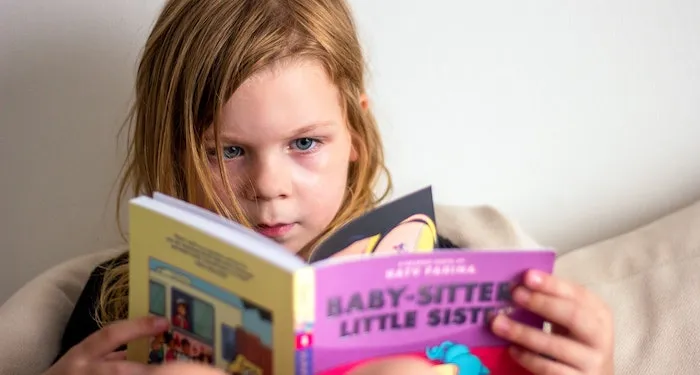

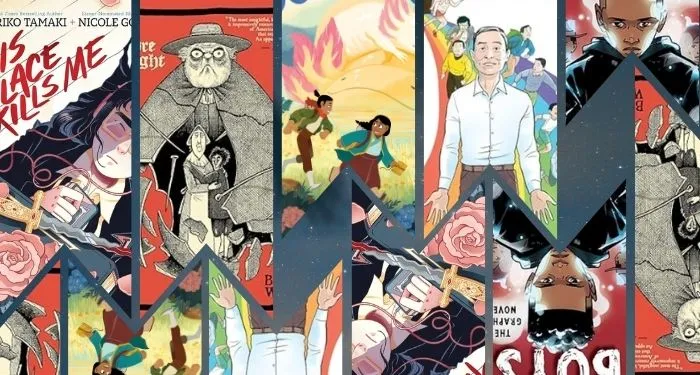

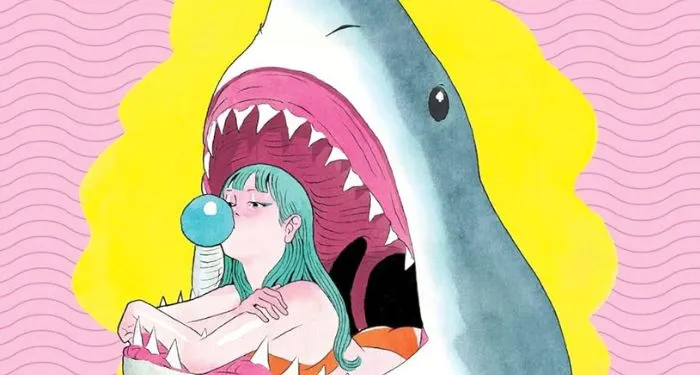



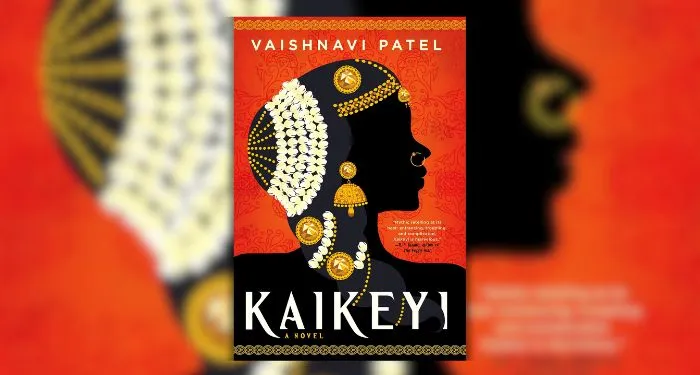


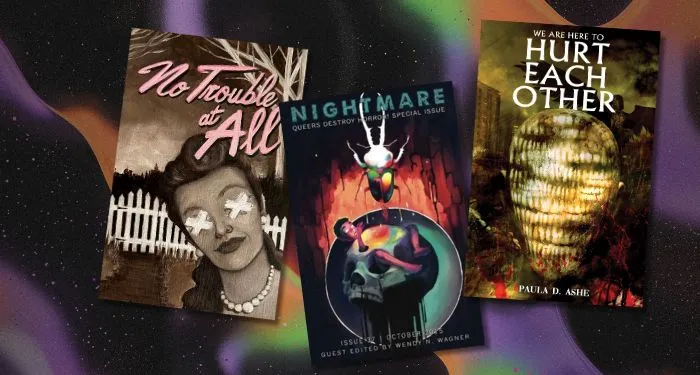
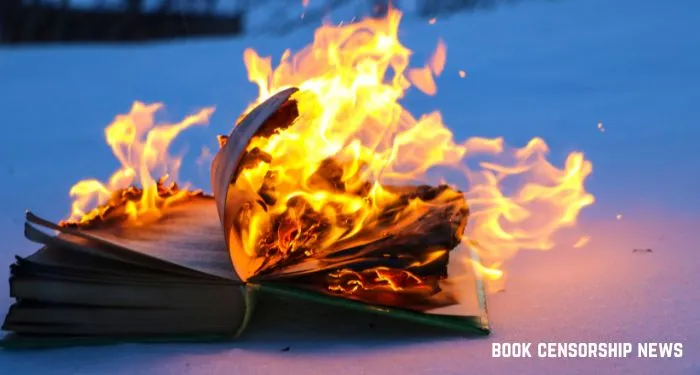

 English (US) ·
English (US) ·